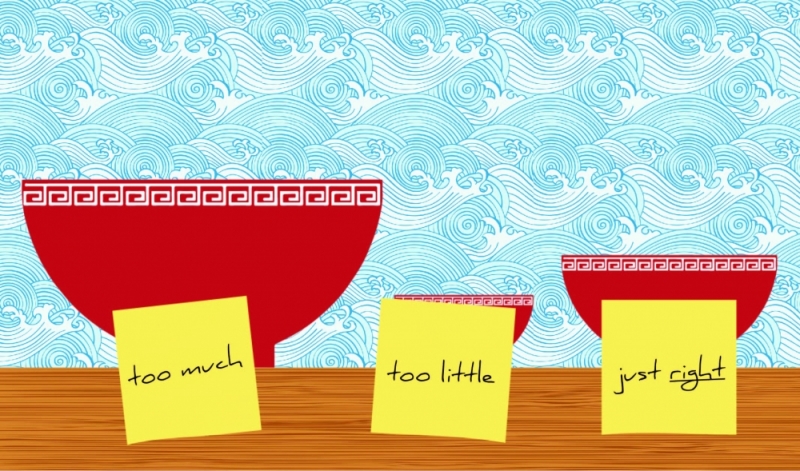
Goldilocks had it right. She was picky. I understand the merits of being picky. Perhaps ‘selective’ is a better word to describe this characteristic. Selective implies a thoughtful process of evaluating options and making an informed decision. In her blog, Beware of taking flexibility a step too far, Julia Freeland Fisher illustrates the importance of being selective and the pitfalls of taking the flexibility too far using current trends in online learning as her example. I’ll let you be the judge of which word I should use once you read why I think Goldilocks had it right.
Why Goldilocks?
Goldilocks had options and decisions to make about those options. Goldilocks gathered and used information to inform her decisions about which bowl of porridge to eat, in which chair to sit, and in which bed to rest. She tasted each bowl of porridge, tried each chair, tried each of the three beds, and then fell asleep in the most comfortable bed. Her decisions were preceded by gathering information (data) and reflecting on that information.
What’s the Point? The Innovator’s Parallel
In our work in innovation, we are engaged in a series of selective acts in which we attempt to design a plan for transformation that will balance the risk of innovation with the perceived benefit from it.
Typically, we gather information through a variety of channels.
- Perceptual surveys from students, teachers, parents, community;
- Focus group discussions about how to improve student, parent, and community engagement;
- Student growth and achievement information;
- Resource allocation information;
- Information on outside pressures or limitations such as policy and law; and
- Research on evidence-based and emerging, promising practices and the conditions under which benefits are achieved using these practices.
We develop a selective design for our innovation and a plan for implementation informed by all the information we gathered.
We implement, evaluate our efforts and outcomes, and we revise our design in a continuous innovation process.
As I write this description I realize how much it sounds like an educational fairy tale. Because sometimes, despite our best intentions, we get swept up by the wave of the latest education trend and we forget to be selective. That is why Ms. Freeland Fisher’s warnings in Beware of taking flexibility a step too far are important. Her blog serves as an important reminder that benefiting from innovation takes informed, selective design and planning done by and for the stakeholders impacted by the innovation.
The End—So What?
The Goldilocks fairy tale and the educational innovation tale have an important difference. Goldilocks didn’t have to live with the consequences of her actions. Once discovered, Goldilocks ran away from the consequences of her decisions, into the forest, never to be heard from again.
We don’t have that option. When we seek to innovate in education we have a responsibility to be informed in our decisions—students’ futures are at stake! We have a responsibility to consider potential consequences as we design and plan for implementation. Finally, we have a responsibility to monitor our implementation process and evaluate the outcomes and impact of our design. In doing so, we step out of the fairy tale and into the real world of innovation work that has the highest probability of success.
